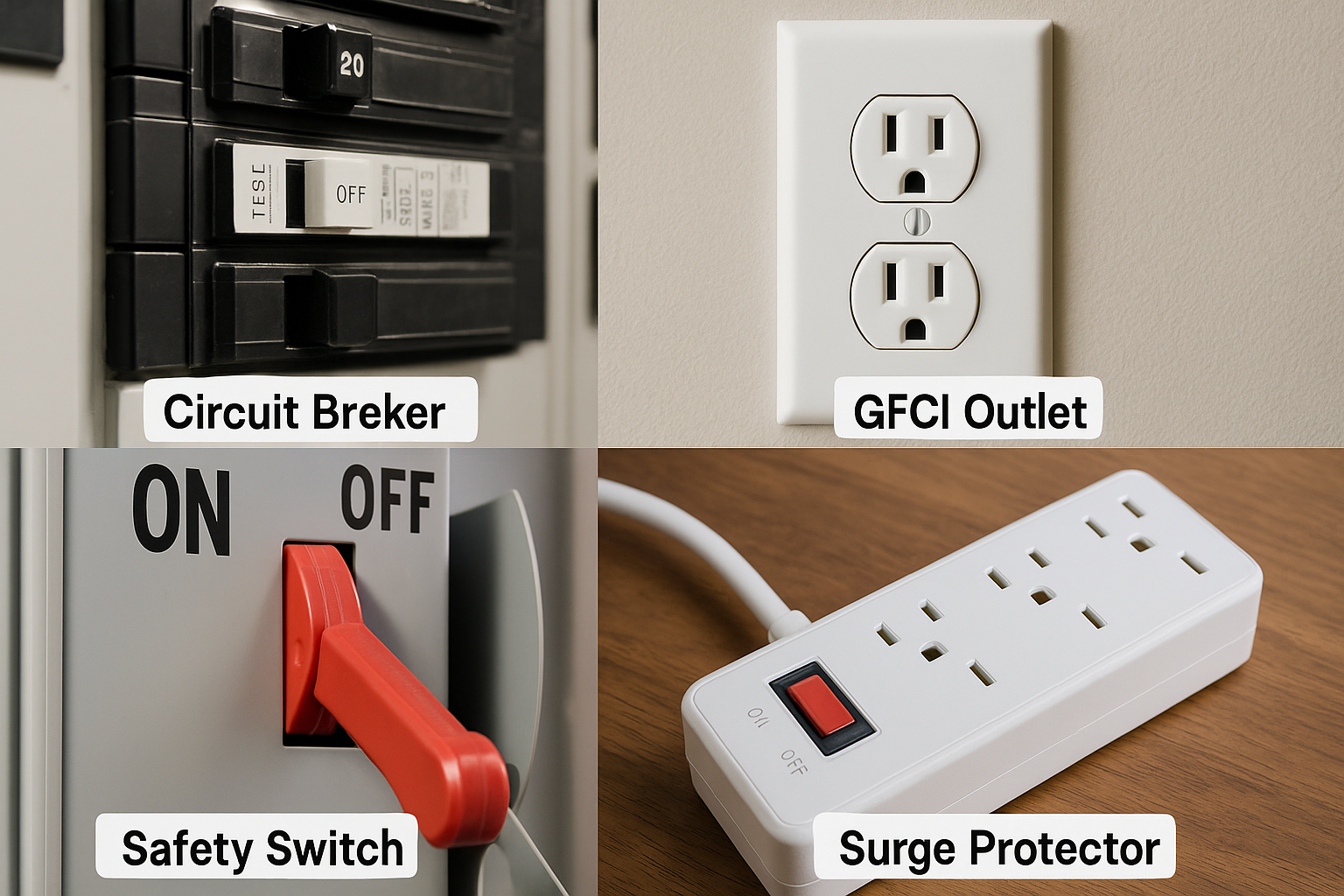Electrical Safety Devices

Strong 8k brings an ultra-HD IPTV experience to your living room and your pocket.
Electricity keeps our homes running, but if handled improperly, it can become very dangerous. It is common for residential and commercial buildings to face the risk of electrical fires, shock hazards, and damage to electrical equipment. That’s why electrical safety devices are necessary. They help identify faults, disable the power supply, and prevent hazards to people and property caused by electricity.
Why Electrical Safety Devices Matter
Electricity can be powerful and may also be dangerous. If safety measures are not established, you could experience:
- Electrical fires
- Shocks from electricity and cases of electrocution
- Appliance damage
- Cyber-attacks and too much system demand
The National Fire Protection Association (NFPA) in the US notes that electricity-related problems often lead to house fires. Up to 70% of electrical injuries in houses could be avoided using proper safety devices.
Electrical Safety Devices and Their Use
If you're planning electrical upgrades or new installations, it's essential to include electrical cost estimates in your project planning. These estimates give you a clear understanding of the financial impact of installing safety devices and help you prioritize which upgrades are most urgent.
Let’s look at the most common electrical safety devices found in homes and buildings.
1. Circuit Breakers
Circuit breakers prevent electrical circuits from getting damaged by overloads and short circuits. If the current becomes unsafe, the breaker will automatically turn off the electric current.
You can find several types of circuit breakers, such as thermal circuit breakers and magnetic circuit breakers.
- Standard Circuit Breakers: They prevent damage from overloaded and shorted circuits.
- Ground Fault Circuit Interrupter (GFCI) Breakers: These breakers work against ground faults and are recommended for bathrooms and kitchens.
- Arc Fault Circuit Interrupter (AFCI) Breakers: They protect against sparking problems that may cause fires.
They avoid heat-related risks such as fires and issues with electrical wires.
2. Fuses
- When too much current flows, fuses melt or explode and separate the circuit.
- There is a metal wire or filament inside every fuse. When there is a high flow of current, the wire melts and shuts off the electricity.
- Fuses are dependable and affordable, but you have to change them after tripping, while you reset circuit breakers.
3. Ground Fault Circuit Interrupters (GFCIs)
GFCIs can identify when current leaks out of its intended route and goes through water or a person’s body.
Applications of Database Systems
- Kitchens
- Bathrooms
- Laundry rooms
- Outdoor outlets
If the difference in current measured by the GFCI is 4–6 milliamps or more, it disconnects the electricity in a fraction of a second.
They keep us safe from potentially fatal electricity when surrounded by water.
4. Arc Fault Circuit Interrupters
AFCIs identify arc faults, which are the result of sparks generated from wiring in poor condition.
They can be found in:
- Bedrooms
- Living rooms
- Hallways
Generally, code mandates that AFCIs be installed in most living spaces of modern homes.
According to research, electrical fires are most often caused by arc faults. AFCIs lower the risk because they interrupt the power before it can turn into sparks or flames.
5. Surge Protectors
Surge protectors shield machines and appliances from sudden voltage jolts caused by lightning or a power surge.
Types:
- Circuit protection: Added to the main panel to secure all the wires in the house.
- Point-of-use surge protectors: These are plugged into outlets to shield individual electronics such as TVs and computers.
They prevent harm to sensitive equipment, help avoid fires, and prolong the lives of goods.
6. Residual Current Devices (RCDs)
RCDs operate similarly to GFCIs and are commonly found outside the U.S. They detect when electric power travels on a path it should not and then automatically shut off the power.
Robots are common in:
- Homes in Europe, Australia, and Asia.
- Usually present in power tools or on temporary power networks.
They play a vital role in outdoor and industrial settings because they lessen the possibility of electrocution.
7. Electrical Isolators (Disconnect Switches)
An isolator is a switch that allows you to isolate a circuit area for repairs or to stop an emergency.
Situations Where They Are Used.
- Industrial settings
- Large-scale solutions for houses
- Solar-powered devices
They remove all risk associated with being near live wires by completely blocking the flow of power to them.
8. Lightning Arresters
They direct high voltage surges caused by lightning away from the electrical system and into the earth instead.
Places They Are Used
- Outdoor electrical lines
- Communication towers
- Solar panels
They stop major damage to the electrical systems caused by thunderstorms.
How to Ensure Your Home is Protected
1. Hire a Professional Electrical Inspection
Ensure an electrician is hired to assess for aging wiring, failures with breakers, and the absence of mandatory safety measures.
2. Install GFCI and AFCI
They must be set up according to the local construction codes in the areas where it is necessary.
3. Replace Outdated Fuse Boxes
You should update your home’s wiring from fuses to circuit breakers and surge protectors if this is what you still use.
4. Use Certified Surge Protectors
If you’re buying any expensive appliances or electronics, pick products that are certified by UL or similar standards.
5. Set up a Regular Testing
Most GFCI outlets and RCDs have a button to test the device and another to reset it. Check their performance every month to be sure they are functioning properly.
Electrical Safety Devices Protect People
It takes an event for many homeowners to realize how significant electrical safety devices are. They are built to respond within milliseconds and cut off power to prevent issues like shocks, fires, or even worse outcomes. Staying safe with these tools is both a wise idea and a necessary step since they are covered in the electrical codes.
Final Thoughts
Electrical devices designed for safety are necessary to guard your home, your family, and your appliances. Just as circuit breakers and fuses are useful for interrupting electricity in case of an issue, GFCIs, AFCIs, and surge protectors also help in different ways to prevent electrical injuries.When constructing a new building, improving existing ones, or installing an outlet, always keep safety devices in mind. Hire a licensed professional to review your system and ensure it follows the most recent guidelines for safety and regulations.
Note: IndiBlogHub features both user-submitted and editorial content. We do not verify third-party contributions. Read our Disclaimer and Privacy Policyfor details.


